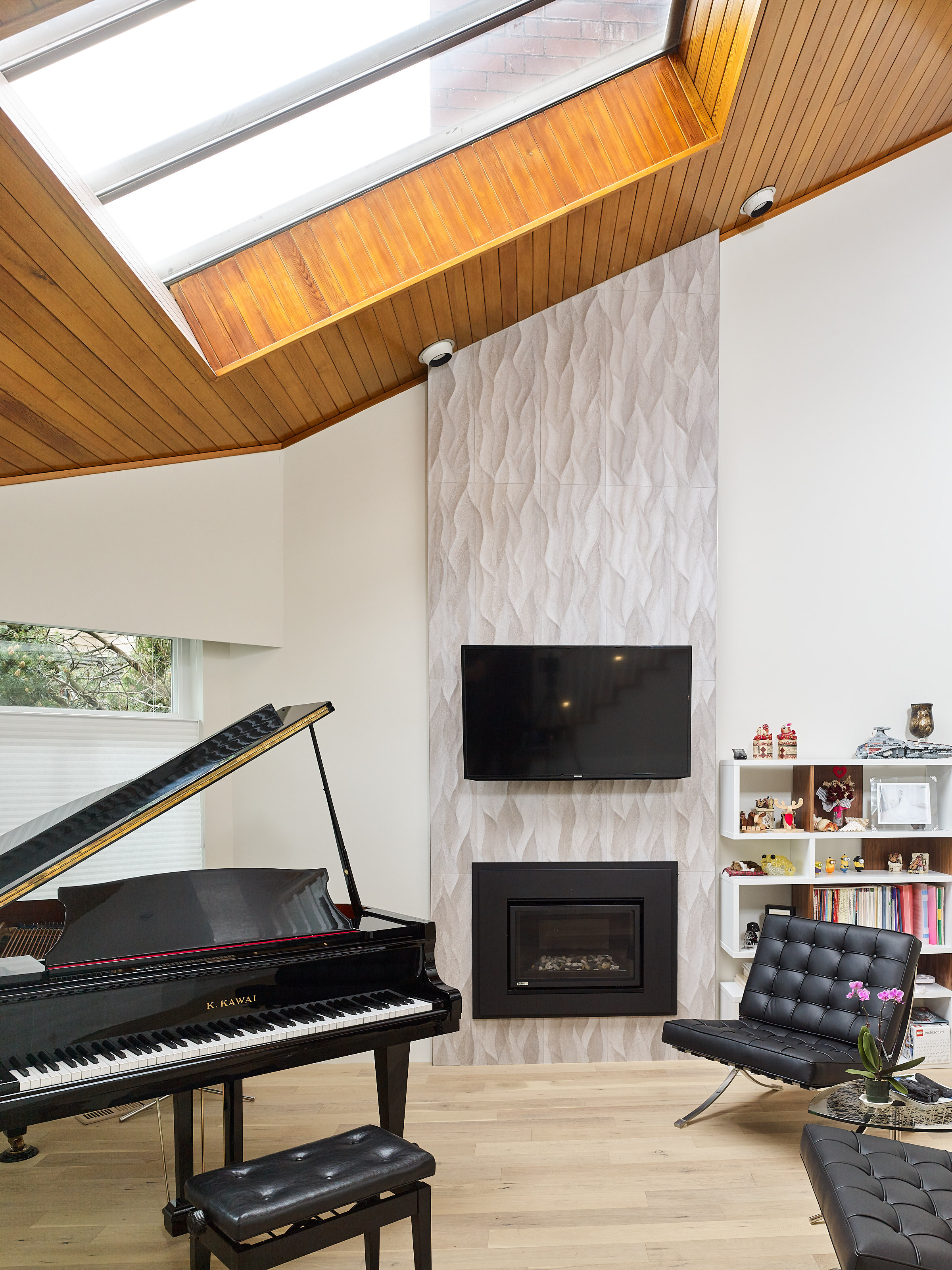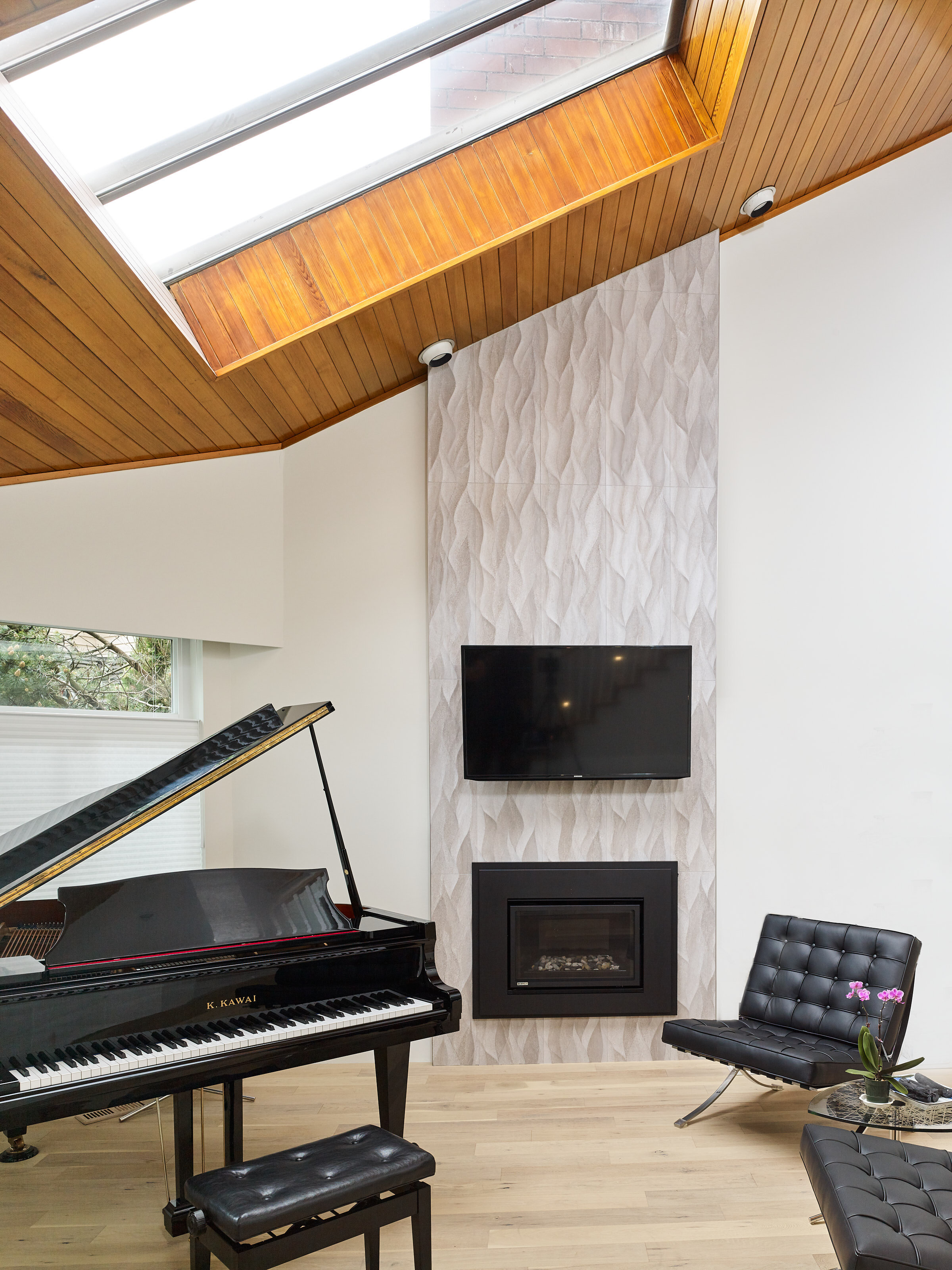We’ve come to the last, and certainly not least, part of this series on working with past projects. (If you’ve missed the previous articles, check them out on our blog). By now, you know why you shouldn’t ignore your past projects in your marketing, and you’ve earmarked what past projects you want to work with and are dripping them across your social media channels (and/or you’re asking us about them; yes, we’ve heard from a few of you!). You have probably also identified a few past projects that you don’t have photos of and are now considering having photographed. Let’s make that happen!
Traditionally, architectural photography usually happens right before/after the client moves in, and before they have a chance to screw up your design have it evolve according to their needs. When you’re considering having past projects photographed, you’re coming back well into the life of the building, and that can bring both challenges and opportunities for everyone.
The Benefits of Photographing Past Projects
The biggest tangible benefit of photographing past projects is, of course, getting to add the photos to your portfolio and using the photos to keep your marketing running along. Depending on your timing, you might even be able to squeeze an award entry or two in if the project is recent enough: a lot of awards programs have 1.5 or 2 year cycles, so check your completion dates carefully. As I mentioned in the first part of this series, past projects can still look good later, and it makes for an even better story if your project that started out amazing has stood the test of time and is still amazing, years down the road.
But in addition to marketing, there are all sort of things you can learn from visiting past projects. We won’t get into the ins and outs of post-occupancy evaluation, but suffice it to say: revisiting projects can let you see things that worked well, perhaps need to be changed, and things you can learn from in the future. You’re getting a glimpse into the life of your project beyond its substantial completion. Landscaping that needs time to grow in has gotten that time and probably looks better; people have hopefully hung good artwork on the walls; and on commercial projects, your project is supporting whatever current use your client is making of it. You are also seeing what didn’t quite work as expected and might either need work to make better, or could be the seed for future clever solutions on another project. Getting that glimpse is good for you as a professional, and it’s also a good benefit for your past, present, and future clients when some learning and the occasional fix comes of it...in addition to a set of great photos.
A lovely heritage renovation, photographed empty after completion to show the then-new LED uplights
The same project, 4 years later
Getting In
The first step is to figure out whether you can have a space photographed, and that starts with getting access to it. You should plan to make a trip by your project to scope it out and see if it’s still worth photographing, and secure access to it if it is.
If you had a good relationship with your client, this might not be a problem at all-—you just get to come on by some fine day with a bottle of wine or a good gift basket, casually drop in the “hey, mind if my photographer comes by for a day and photographs the place?” question in conversation, and your fantastic client who keeps everything exactly as you designed it (or did something that makes your design shine even more!) lets you schedule the shoot and everyone walks away happy. But sometimes things have changed so drastically that it isn’t worth coming back in to photograph, or a space has unexpectedly changed hands; you also need to have a good idea as to what you’re going to have to do so your can prepare things for photo day as if it were a new project
If it’s a project you care about, and your client is being difficult, there are a number of things you can try in order to get back in. Often, offering your client something (or a lot of things) of benefit to make their lives easier will work great: for residential clients, this might be as simple as paying for a cleaner to come through and spiff everything up while they get to take their family and relax at a favourite spot for the day: they get a quick break, and come back to a clean space with some fresh flowers to enjoy. For commercial and hospitality clients, giving their marketing folks an opportunity to share in the process and get access to the images they need can give everyone a win and save effort and money (particularly if you arrange this in advance; talk to us as we can make this easier for everyone).
You could also offer to work with your client a bit to figure out if there are any minor deficiencies that have cropped up, and get them fixed; or if there’s something about the project that could be working better that you could easily take care of for them. Fixing a hard-to-reach light fixture, taking care of an annoying paint scuff, or refinishing their reception area table that’s now all covered in coffee stains could get you back in. While this may end up costing you some extra time and money, if it’s a major project that you really need for your portfolio, it could be definitely worth it...particularly if you can get a good client testimonial and possibly more work out of it. We’ve also seen the odd project where some minor frustration with a completed space turns out to be the catalyst for another piece of renovation work, leading to a good “before and after” study and another project for your firm. Changes due to dealing with COVID-19 could be a big driver of this, particularly in retail and office interiors.
To show age, or not to show age?
Depending on how long it’s been since your project completed, some parts of your project might have improved with time (landscaping, Cor-Ten steel, etc.). On the other hand, there might be places where your client did something that wasn’t part of your design, something broke, or there might be inappropriate signage. Some of this might be fixable (either on site or in post), and sometimes it’s better to just not show things you don’t want to show.
This lush landscaping didn’t grow overnight…
This is something you’ll need to decide on a site visit. If there are angles where everything shows the way you want it to without showing parts you don’t, let us know; better yet, take a quick photo with your phone so we can line everything up appropriately. If there are things that are “close, but need a bit of work” (signage, nail pops, the occasional water stain , point those out to us either before or during onsite photography, as there are often clever tricks and work in postproduction that we can use to make things look a lot closer to your original design intent than you might expect.
Sometimes, you can get the effect you want by simply removing and replacing accessories and furnishings. In single-room projects (particularly in kitchens and baths), this is particularly effective because the materials are intended to be hard-wearing and can be easily cleaned...and whatever tough dirt there is that can’t be removed on site can be removed in post. A cleverly placed accessory can also cover up the odd spot where things haven’t aged well. Sometimes you end up with the opposite problem: you can’t move an accessory and it has to be removed in post.
Showing/telling a better, wider story
As I’ve mentioned before, working with past projects gives you the opportunity to be part of the wider story of your building’s evolution, and communicate about that story with your current and future clients. If you have past projects that are “wearing well,” that’s a testament to the goodness of your design work and something you can be proud to show off and talk about. You don’t just have a project that looked great when you completed it, you have a project that still looks great. If you have past projects that might need to be changed soon and need to be documented before they change too much, those photos might be the best if not only record of the work you did. We love photographing projects at any step along the way, so let’s...bring your past projects back to life!






